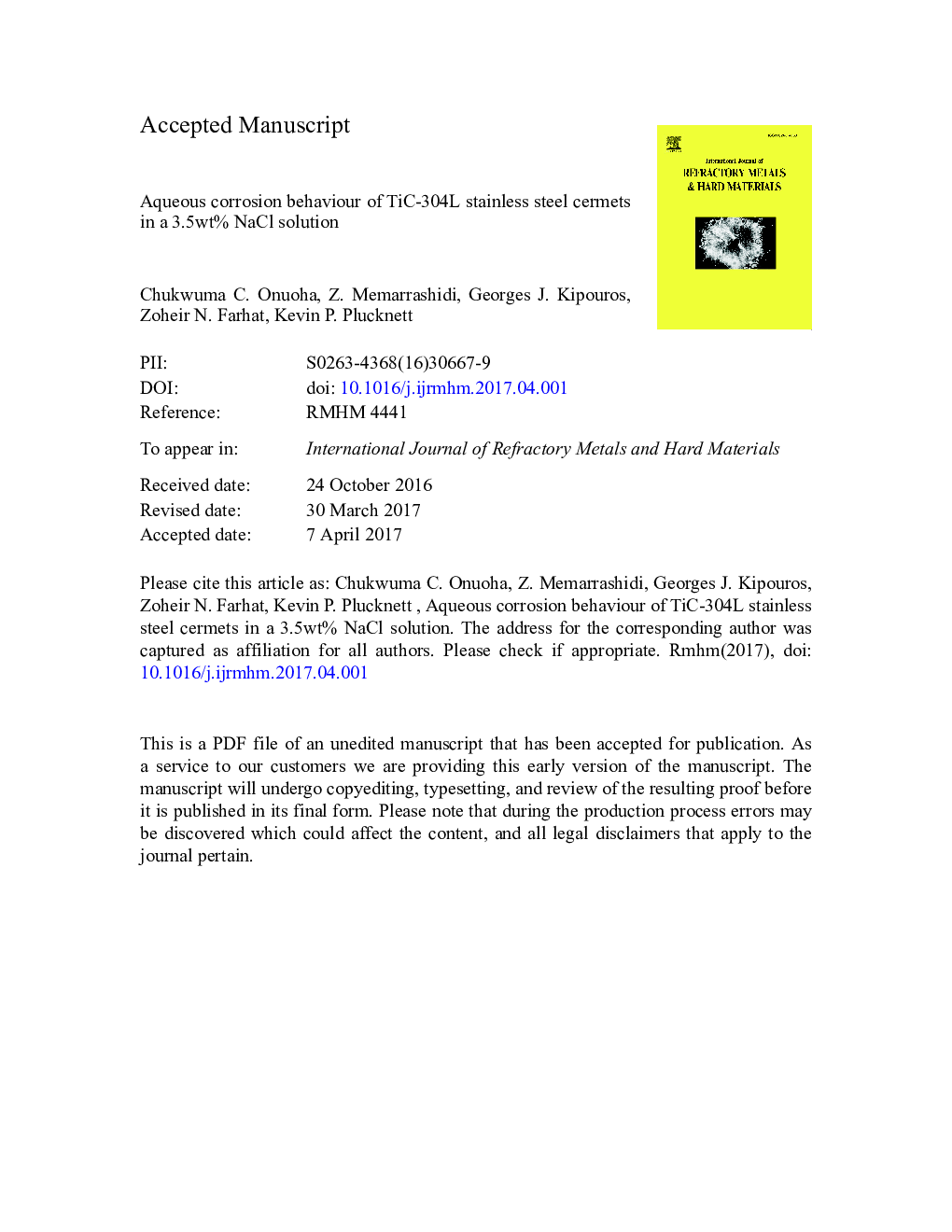| Article ID | Journal | Published Year | Pages | File Type |
|---|---|---|---|---|
| 5457787 | International Journal of Refractory Metals and Hard Materials | 2017 | 45 Pages |
Abstract
High-density titanium carbide (TiC) based cermets were prepared using 10 to 30Â vol% 304L grade stainless steel binder. A range of electrochemical techniques was applied to study the corrosion response in an aqueous solution (with 3.5Â wt% NaCl), including potentiodynamic, cyclic and potentiostatic polarisation. Corroded samples were characterized using SEM and associated EDS, while the post-corrosion aqueous solutions were analysed by ICP-OES, to determine the dissolved solute ions and the composition of any particulate material released during corrosion. It is shown that by increasing the steel binder content the corrosion resistance of the cermets decreases slightly, which appears to be related to the preferential dissolution of the steel binder at higher rate when lower metallic content is selected. A general corrosion mechanism is seen, whereby the composites exhibit similar electrochemical characteristics. Single-phase analysis has confirmed that the 304L steel and TiC exhibit broadly similar oxidation properties, which eliminates the formation of galvanic couple at a controlled ratio between the metallic and ceramic phases.
Related Topics
Physical Sciences and Engineering
Materials Science
Metals and Alloys
Authors
Chukwuma C. Onuoha, Z. Memarrashidi, Georges J. Kipouros, Zoheir N. Farhat, Kevin P. Plucknett,
